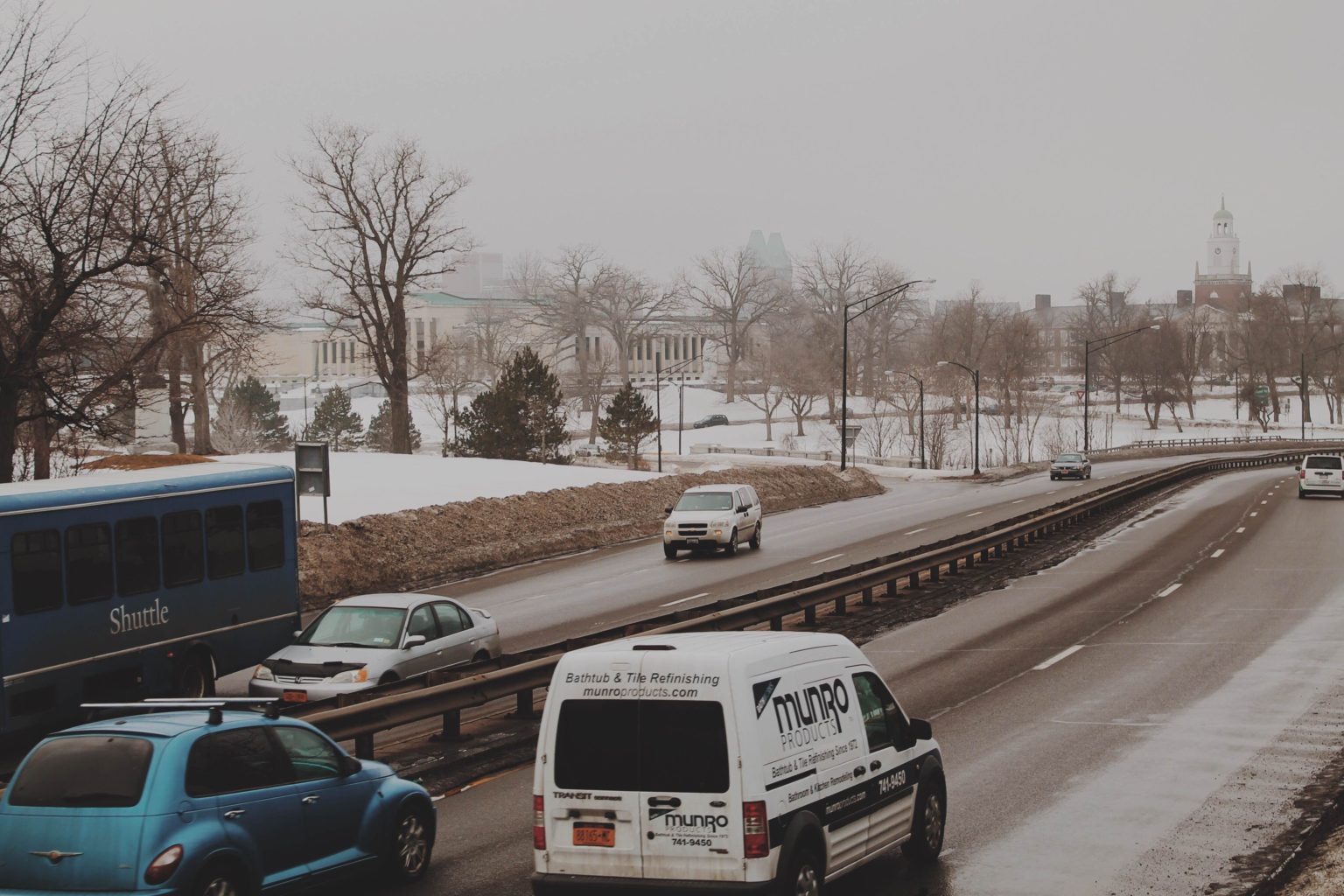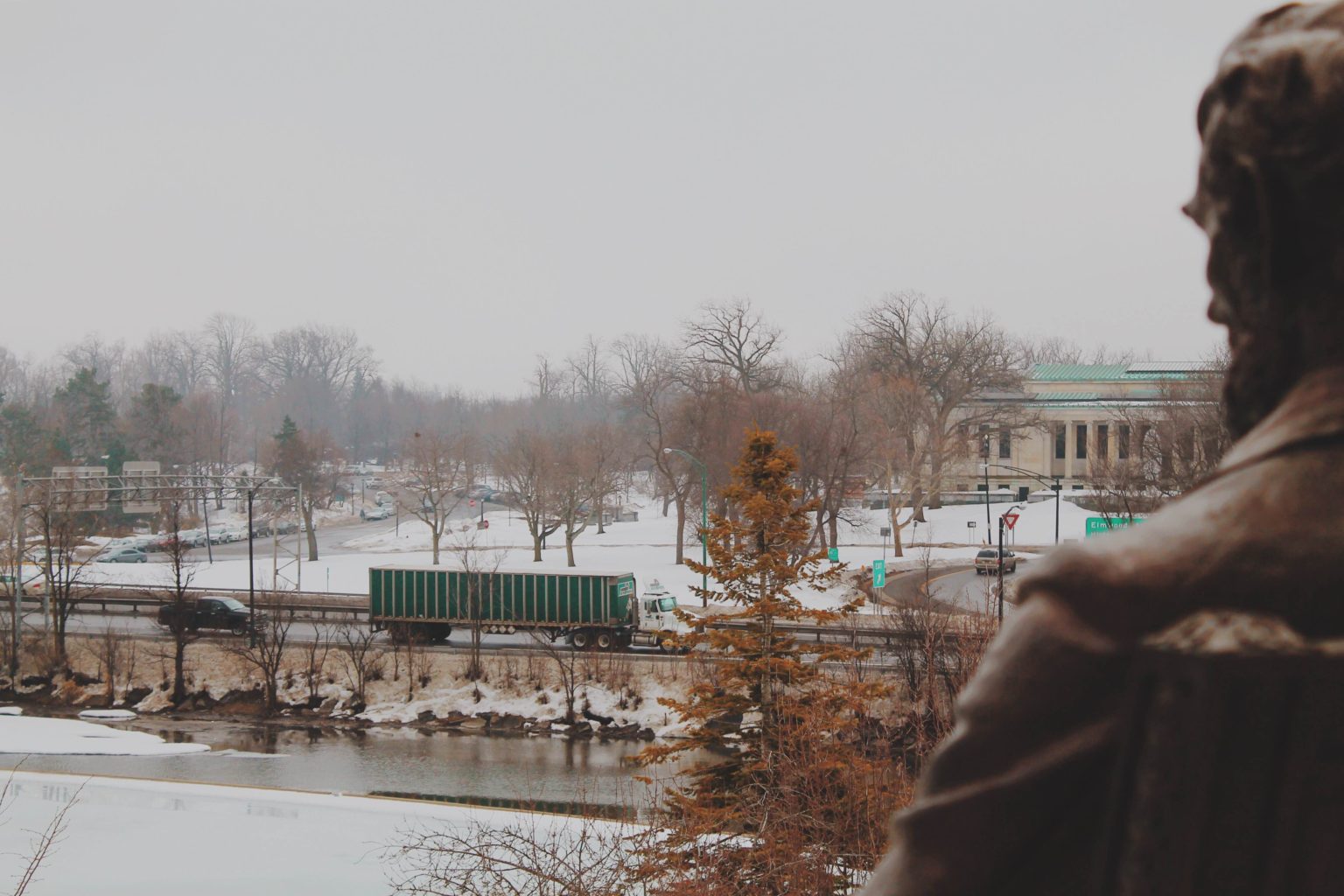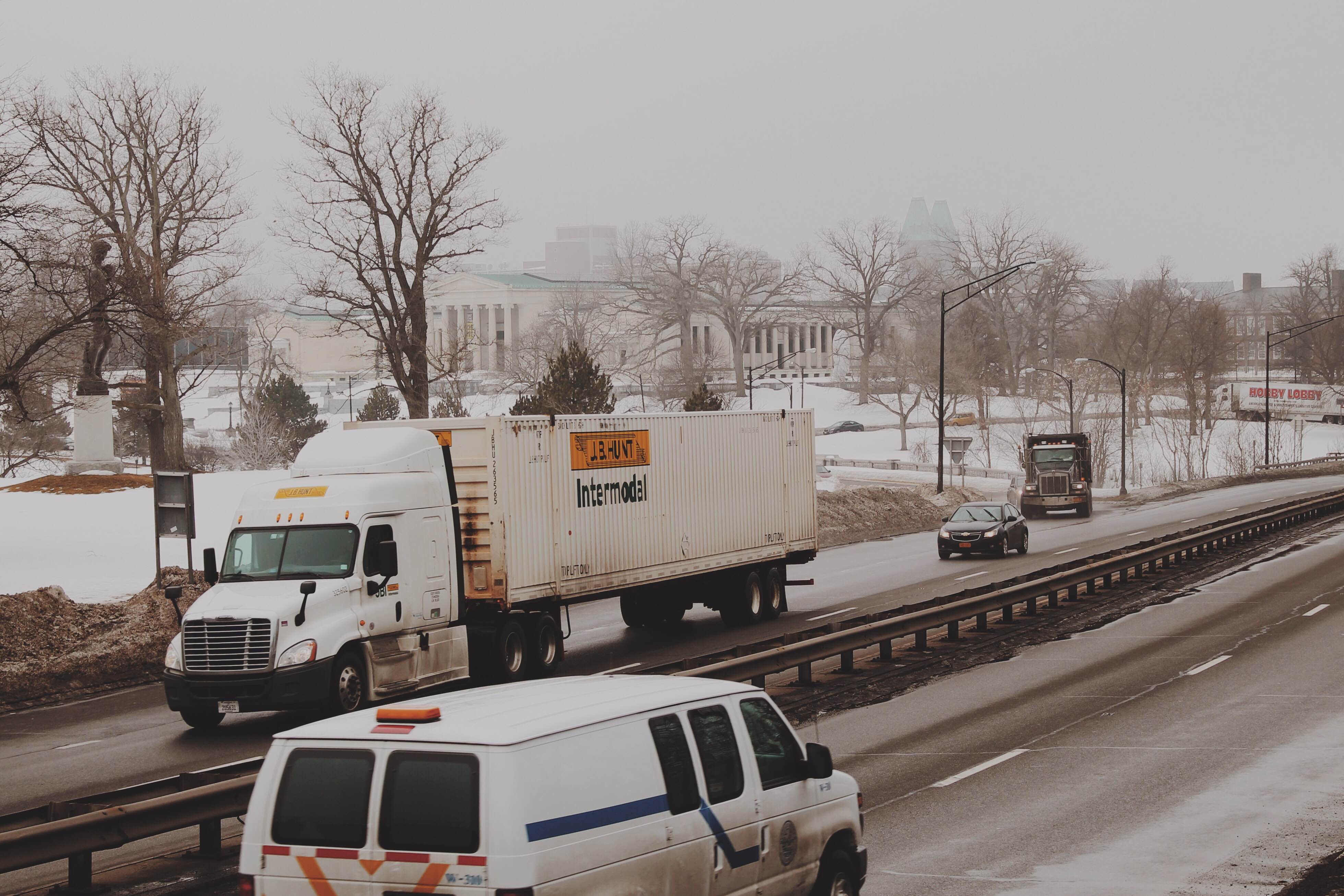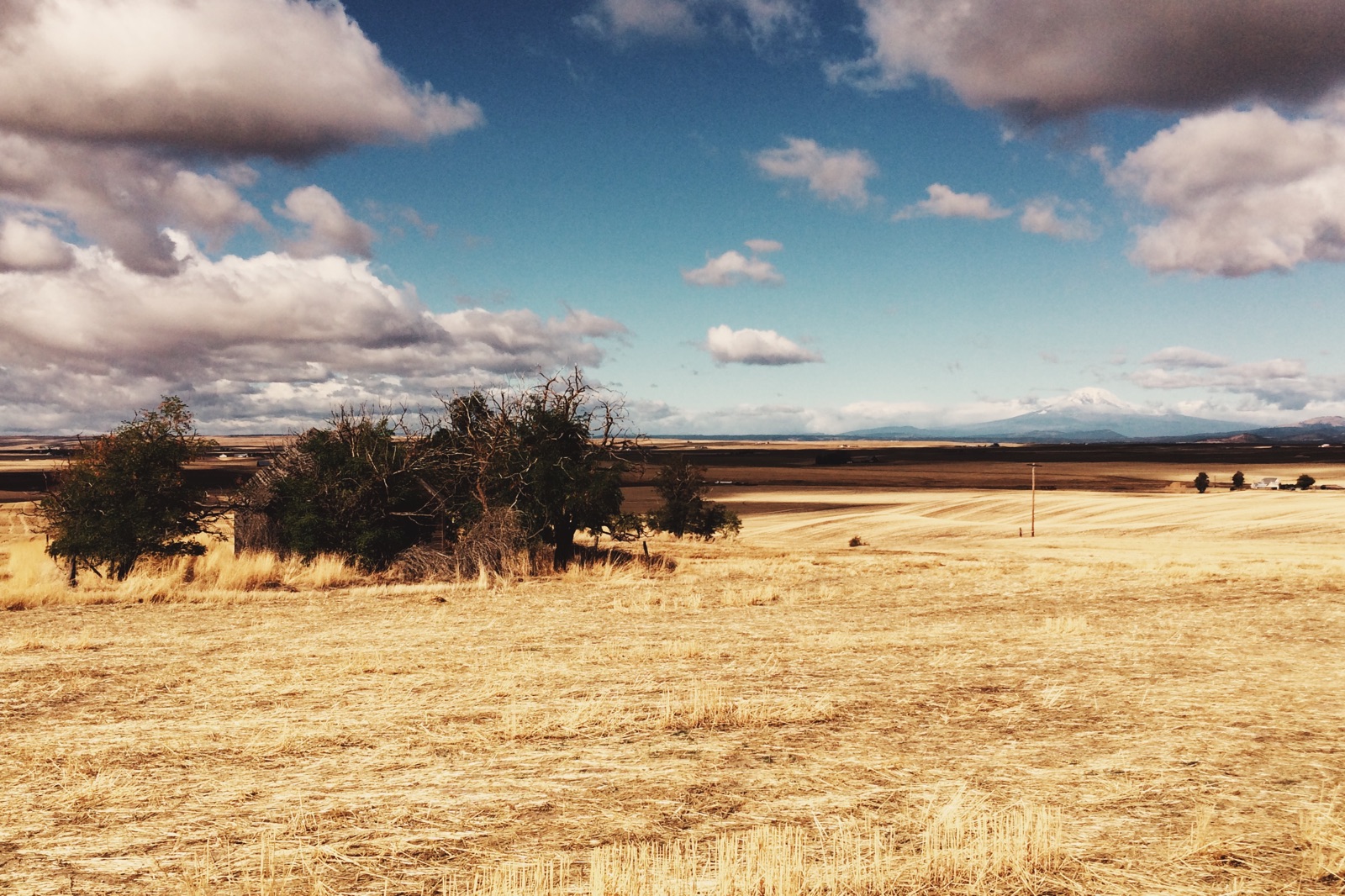Panelists included Bob Shibley, Dean of the School of Architecture and Planning at UB, Frank Kowsky, author and Retired SUNY Distinguished Professor of Fine Arts at Buffalo State, and Mark Goldman, author and local restauranteur.
By now, you’ve likely seen the “America’s Best Designed City” video from John Paget. You understand how unique the park and parkway system Buffalo had was, and you’ve likely cringed at the thought of how Humboldt Parkway used to look like Bidwell Parkway before the suburbs and cars had their way with our city.
Highways and the clever ways they find to block views of the waterfront, tear through neighborhoods, and cut downtown cores in half do not make cities unique.
Parks and parkways, and easy access to them – that’s what makes a city unique, worth visiting, and great to live in.
What was interesting to learn was that the plan to surround the city in a highway (190, 290, 90), as well as create a “cross town expressway” (198, 33) was developed as early as 1921 by the Regional Planning Association, the first RPA in New York State, even before the Port Authority of New York. So these highways weren’t a post-war idea, but rather a prediction made in the 20s by people speculating that cars were going to become more and more popular.
What happened next was brought about by the thinking of the time. Without cars and highways around for decades previously, there was no data to see what they did to neighborhoods and entire cities. Planners believed they were helping the city to progress and grow at the expense of only the streets they were on, not at the expense of all of the neighborhoods bordering them.
The thought was – If we can’t stop people from moving to the suburbs, then we ought to build fast lanes for those people to get to work, or we’ll lose their businesses too.
Cars, Cars, CARS. People actually cheered when the last street car was pulled off the streets of the city. Now, we’d love to have them back.
During the Q&A, a member of the audience talked about a town just up the road from us that was similar in size in the 1950’s. While we were paving over our street car rails, they were expanding its network and building a subway. Buffalo lost huge numbers of population as people moved to the suburbs, or out of New York entirely when manufacturing dried up, while this other city built up its downtown core and saw people continue to move in. That city? Toronto. Their population grew to around 3 million people while we shrunk to just over 200,000. Sure there are other factors in their growth and our decline, but their city grew, not just their suburbs, because of investment in parks and public transportation.
 So, back to the meeting’s main focus – NYS Route 198 or the Scajaquada Expressway. When Delaware Park was designed by Frederick Law Olmstead, the only road that was to cut through it was Delaware Ave. When driving, after you get through the S curves, you go under a beautiful bridge before you’re in North Buffalo. That was supposed to be the only interruption to the park. But if you were walking through the park before the 1950s, the bridge was so covered in vegetation, that you could ignore the road underneath you entirely.
So, back to the meeting’s main focus – NYS Route 198 or the Scajaquada Expressway. When Delaware Park was designed by Frederick Law Olmstead, the only road that was to cut through it was Delaware Ave. When driving, after you get through the S curves, you go under a beautiful bridge before you’re in North Buffalo. That was supposed to be the only interruption to the park. But if you were walking through the park before the 1950s, the bridge was so covered in vegetation, that you could ignore the road underneath you entirely.
In the 1950’s, the demands of both the suburban drivers and commercial trucking to have a cut through from I-90 to 190 spawned the 33 and the 198. Seven lanes of traffic loop under Main St. and bottleneck at Parkside Ave. Canisius College, Medaille College, Sister’s Hospital, Hamlin Park, and the Parkside Neighborhood butt up to a mess of intersections, on and off ramps, and bridges, leaving anyone who wants to walk to or from the park about 15 seconds to cross all those lanes before the traffic light changes. That bridge in the park, once meant for pedestrians and carriages, is now 4 lanes and 1 very narrow sidewalk wide. Sorry. Cars come first.
 The Buffalo Historical Society’s portico has a brilliant view of high speed cars damming Hoyt Lake. Buffalo State College sees nothing but a highway along its longest border. The 198’s on and off ramps to 190 have destroyed any pedestrian access to the mouth of Scajaquada Creek where it empties into the Niagara River, and there is little to no development going on in that neighborhood on Niagara St. since the 198 and 190 were built.
The Buffalo Historical Society’s portico has a brilliant view of high speed cars damming Hoyt Lake. Buffalo State College sees nothing but a highway along its longest border. The 198’s on and off ramps to 190 have destroyed any pedestrian access to the mouth of Scajaquada Creek where it empties into the Niagara River, and there is little to no development going on in that neighborhood on Niagara St. since the 198 and 190 were built.
Another audience member had an amazing idea to close 198 for a day or for a weekend, and have a party on it. Set up tables for 10 at $80/table so all can come, and bring your own food. Use the money raised for research and advocacy work. See how traffic reacts, and raise awareness for the idea of having an unbroken park. GoBikeBuffalo has managed to close the Skyway for its Sky Ride. The idea isn’t that far fetched.
The panelists invited us to consider the idea of tearing down the 198 entirely. Propose this plan and listen to the supporters and the critics. Every critique is a gift because it points your research in the right direction. You can find the data that serves as a counterpoint and make your argument stronger in the future. In my opinion, let streets like Hertel, Amherst, Delevan, and Ferry absorb the traffic that needs to go East-West, and watch drivers find different ways around on their own. If commuters and trucks want no business stopping anywhere in the city or are only passing through, well they can take the long way – 290 to 190. A lot of the major projects that did this damage took 20 years to complete. Bob Shibley said “It’s not the plan. It’s the Planning.” as he quoted Eisenhower. So don’t just have a plan now, but continue through the planning stage and help this idea gain traction year by year.
Mistakes like the 198 and 33 are still relatively young and not beyond fixing. Niagara Falls is tearing down the Robert Moses Parkway. Rochester is removing the Inner Loop. Strong, sustainable neighborhoods are walkable and livable. That idea is overpowering the belief that wide, fast highways are the path to development.
This can take years to enact, but the DOT is planning specifically for the 198 now. So far, their car-centric proposals have included only maintaining the status quo and slowing traffic down. If you feel passionate about it, please come to more meetings like this, and write to your state representative. Tim Kennedy has been leading the charge, and his district houses the entire 33 and a portion of 198. Marc Panepinto’s district covers the rest of 198 and nearly all of 190.
Let’s get OUR Delaware Park back, and stop surrendering our neighborhoods to the demands of suburban drivers.




